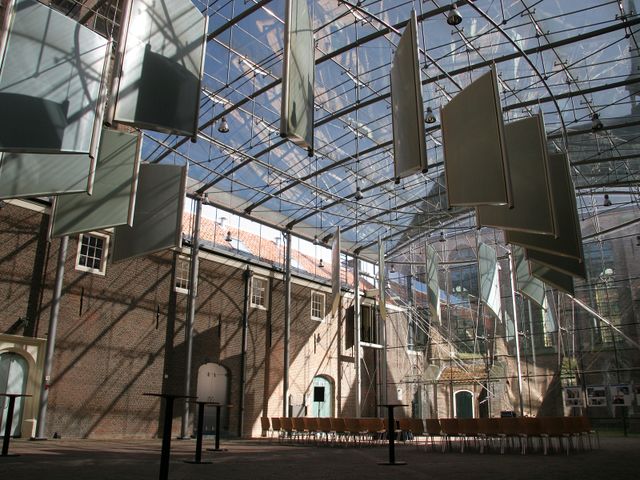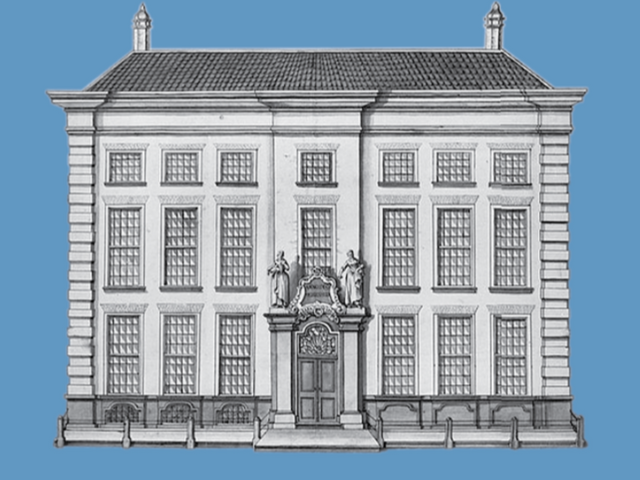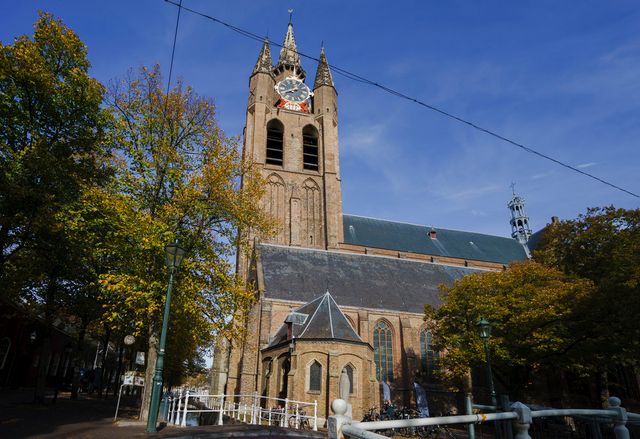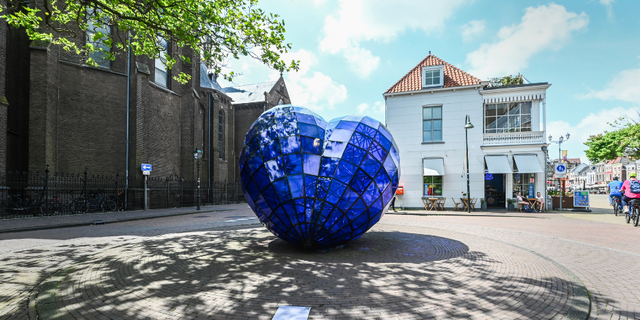
Oude Kerk Monument to Antoni - Walkingroute Antoni
The Oude Kerk contains the final resting place of Van Leeuwenhoek and Reinier de Graaf.
Final resting place
His daughter Maria, ensured that a mausoleum was built. His friend, the poet Huibert C. Poot, wrote an epitaph that can still be read in the Oude Kerk.
The Royal Society of London
In 1666, the physician Reinier de Graaf settled in Delft and became friends with Antoni, who was nine years his senior. De Graaf introduced Antoni to the Royal Society of London and urged him to send his findings (letters) to the Royal Society, the British academy of sciences. Not long afterwards, Reinier de Graaf died unexpectedly at the age of 32. He was buried in Delft’s Oude Kerk, with its characteristic leaning tower. The church is also known locally as Oude Jan or De Scheve Jan (‘leaning Jan’).
Mould, bees and lice
Thanks above al…
Final resting place
His daughter Maria, ensured that a mausoleum was built. His friend, the poet Huibert C. Poot, wrote an epitaph that can still be read in the Oude Kerk.
The Royal Society of London
In 1666, the physician Reinier de Graaf settled in Delft and became friends with Antoni, who was nine years his senior. De Graaf introduced Antoni to the Royal Society of London and urged him to send his findings (letters) to the Royal Society, the British academy of sciences. Not long afterwards, Reinier de Graaf died unexpectedly at the age of 32. He was buried in Delft’s Oude Kerk, with its characteristic leaning tower. The church is also known locally as Oude Jan or De Scheve Jan (‘leaning Jan’).
Mould, bees and lice
Thanks above all to the excellent quality of his lenses, Antoni succeeded in discovering many tiny structures for the first time. His first letter contained details of the structure of mould, a bee and a louse, details that no one had ever seen before. Once famous researchers had improved the lenses of their microscopes, they too could see these things. The Royal Society was so interested that they asked him to write again, and he was eventually made a Fellow of the Society.
Van Leeuwenhoek continued to research a wide range of subjects for the rest of his life. Other parties, such as the Royal Society or the Dutch East India Company, sometimes approached him with subjects to investigate, but often he simply researched what he considered to be interesting. On his deathbed, he even dictated a letter to the Royal Society about the illness from which he was suffering; the diaphragmatic flutter, a rare disease of the midriff that is now known as Van Leeuwenhoek’s disease. Van Leeuwenhoek died on 26 August 1723, having almost reached the age of 91.



















